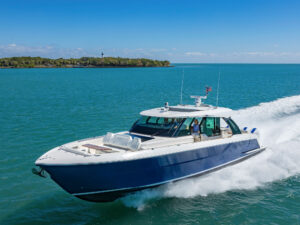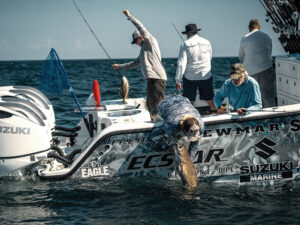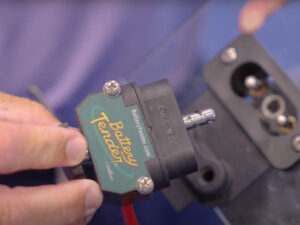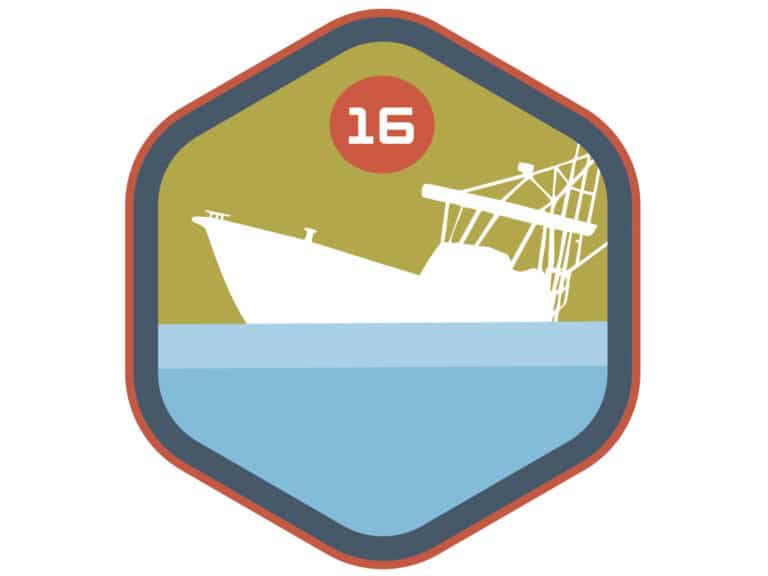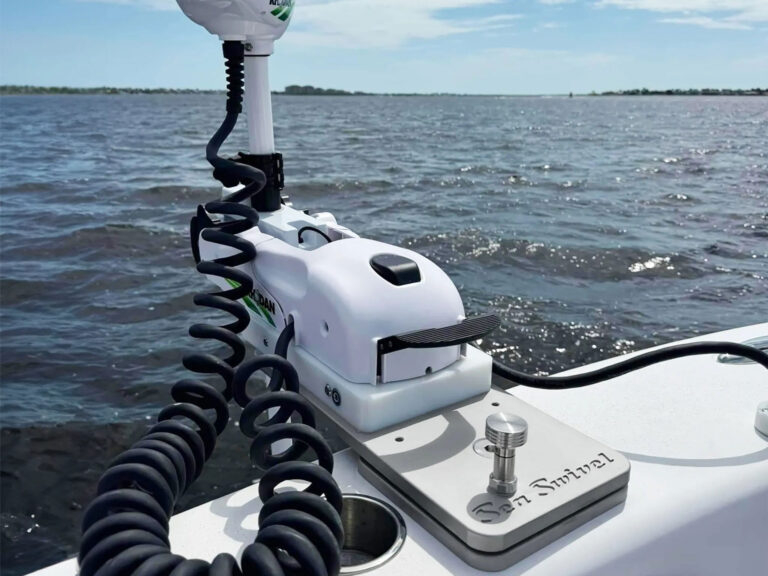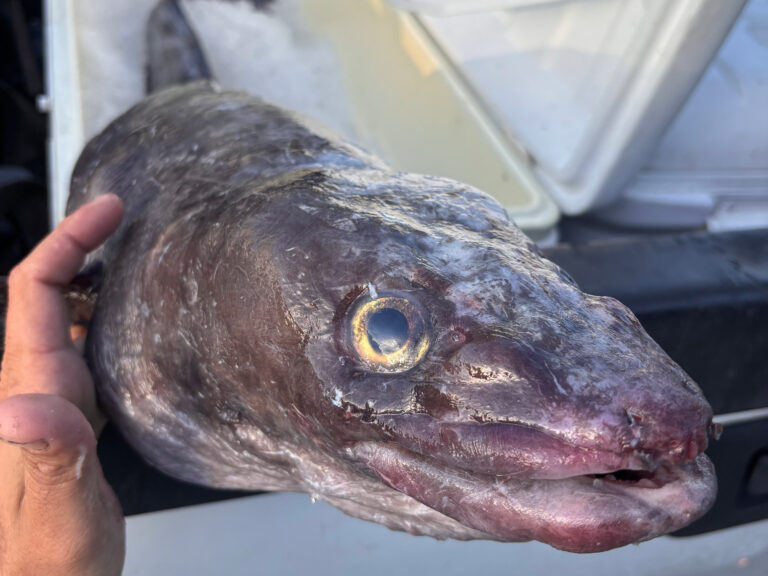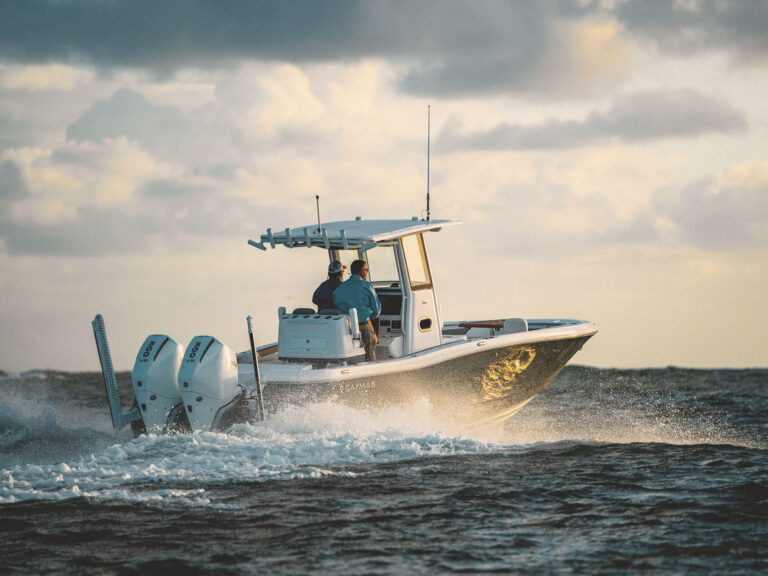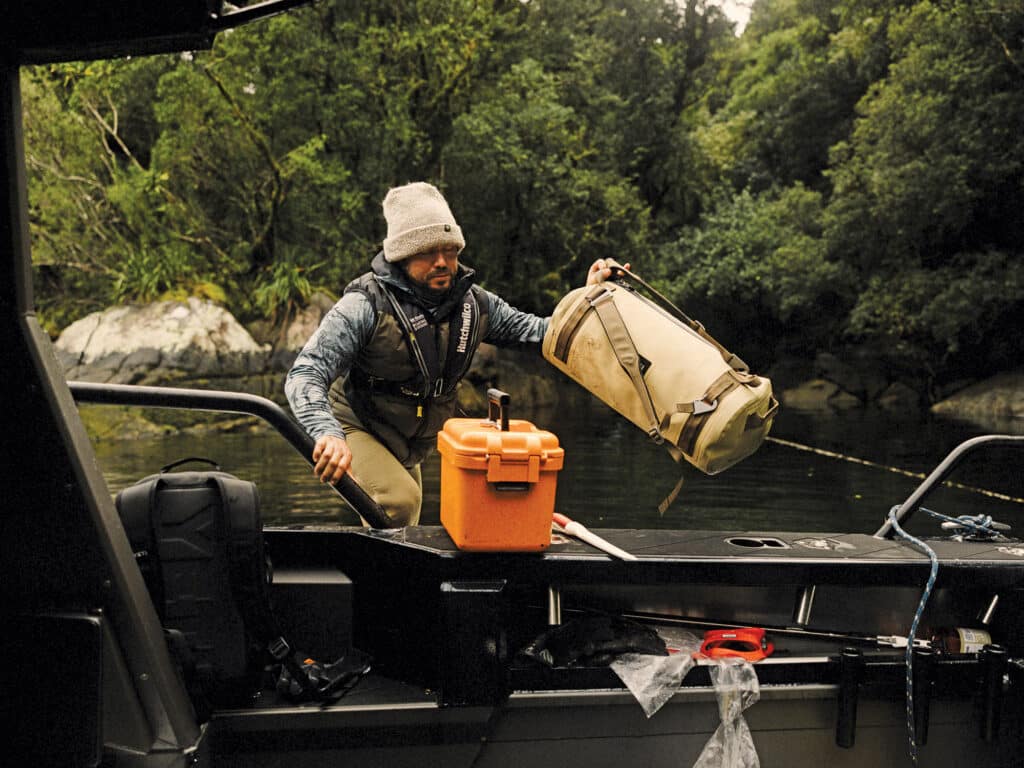
Rods shattered, reels stolen, rusted tackle, gear soaking wet and stinky—these are just a few true horror stories of a traveling angler. Nothing is worse than arriving at an overseas fishing destination and discovering damaged or missing fishing gear. No one knows the pain more than anglers who travel for a living. International fishing guides and world-traveling adventure anglers have learned lessons the hard way and use the best travel cases guaranteed to survive the world’s worst baggage handlers.

Snapping Sticks
Fishing rods are long, thin and fragile, making them difficult to transport. Not only are fishing rods susceptible to forces outside a rod tube, they also face danger inside the protective case.
Larry Dahlberg, host of The Hunt for Big Fish, has broken more fishing rods than most anglers own. “I bring a zillion fishing rods for lures, live bait and fly-fishing,” he says.
To protect his rods, Dahlberg uses a 7-inch-by-8-foot schedule 40 PVC pipe. “I can hit it with a sledge hammer,” he jokes. However, he warns the plastic becomes brittle in subfreezing air temperature.
Dahlberg tapes the rods together and then stuffs empty space in the rod tube with his socks and underwear. “Be sure to tightly pack padding in the tube ends,” he adds. “If the baggage handlers throw the rod tube against a wall, the rod tips will go kapow.”
The gold standard for rod tubes is the legendary Plano Guide Series Jumbo rod tube. The two-piece case extends up to 9 feet long, with space to accommodate up to a dozen fishing rods. The double-wall construction prevents impact damage. A balanced carry handle and wheels make the case easy to move. The rod case even has a lock to discourage thieves.
A travel fishing rod is only as good as its case. Outdoor photographer and writer Jess McGlothlin, of Jess McGlothlin Media, packs her fly rods inside her checked luggage. “I have to reserve my carry-on for camera gear,” she explains. By rolling her rods in a Patagonia Black Hole rod case and nestling it in her clothes, the rods are protected from damage better than riding separately in a rod tube.

Reely Delicate
When AFTCO tackle brand manager Robbie Gant travels, he carries his own fishing reels. “I can often get a fishing rod, but I like to know my reels are in good working order,” he explains.
Gant packs his reels in a soft-sided AFTCO reel bag with each reel in a soft case. He says, “I’ve heard of reels in checked baggage going missing.” Gant recommends removing the fishing line from reels. “Some airlines won’t allow fishing line inside the plane.”
Jeff Currier, with Jeff Currier Global Fly Fishing, targets hard-to-catch fish in hard-to-reach destinations. “I like the weird ones,” he laughs. Currier has opened his luggage to find smashed reels. “I’ve had reels broken so bad, I can’t use them,” he says. To prevent damage to his fly reels, he packs them face-to-face in a Simms Tailwind Reel Vault. “By packing reel handle to reel handle in neoprene cases, the reels support each other to reduce the risk of banging around,” he explains.
Daiwa recently introduced a new Neo reel cover designed to protect and transport spinning reels. The cases are constructed from thick neoprene with mesh sides to allow the reels to dry. A small pocket inside the case holds the reel handle, and a tag on the outside labels the reel. The reel case even protects the reel when it is mounted on the rod.

Tangled Tackle
Before traveling, our pros recommend anglers research the best lures and rigs for the local species. Many destinations don’t have access to the latest tackle. But hooks and lures banging around in a tackle box will end up tangled and broken.
To transport his tackle, Dahlberg uses a Yeti Loadout Go Box. “I can lock the box and secure the lid with zip ties to keep it from opening,” he says. Inside the hard case, Dahlberg fills every space with tackle, line, rigs and gear. “I freakin’ stuff it in there,” he laughs. He uses smaller boxes to compartmentalize his lures, hooks and terminal tackle, and places tools and weights on the bottom of the box.
When Gant arrives at a fishing destination, he uses a soft-sided tackle bag to carry his gear on the boat. “I fold the soft case and pack it in my luggage,” he says. Before heading out on the water, he fills the tackle bag with tackle trays loaded with the specific lures and rigs he’ll need for the day.
Managing tackle and camera gear requires McGlothlin to stay organized. She carries her flies in a large box and then transfers flies to smaller boxes selected for each day’s fishing. “I keep one box ready for the first day of fishing so I don’t have to waste time rigging up when I arrive,” she says.
Read Next: The Beauty of Fishing Trips

Gear Bags
World-traveling guide Currier uses Simms Tailwind waterproof duffel bags to protect his gear. “I’ve watched my luggage sit in the rain on the airport tarmac,” he sighs. Many times, reaching the final destination requires a rough ride in an open boat. “The waterproof duffel ensures my gear stays dry,” he adds.
To organize gear inside the suitcase, McGlothlin uses Yeti packing cubes—square, nylon bags with a wraparound zipper and mesh ventilation. Packing soft goods in the square bags allows McGlothlin to fit more gear into a smaller space. “The cubes help me keep track of my gear,” she says. When customs agents search her luggage, she can quickly inspect the cubes for missing items. At her destination, McGlothlin packs each cube with gear to meet various conditions, like cold weather or wading. “Cubes save a lot of time,” she says.
For added security, McGlothlin hides Apple AirTags in her luggage. “One time my bag didn’t arrive on the luggage carousel, and I used the AirTag to show the airline workers where the bag was located,” she says.
These traveling anglers have covered thousands of miles and fished far from the nearest tackle shop. Arriving with broken or missing gear has serious consequences for their business. They’ve learned the hard way how to pack tackle so it makes it to the destination in one piece.
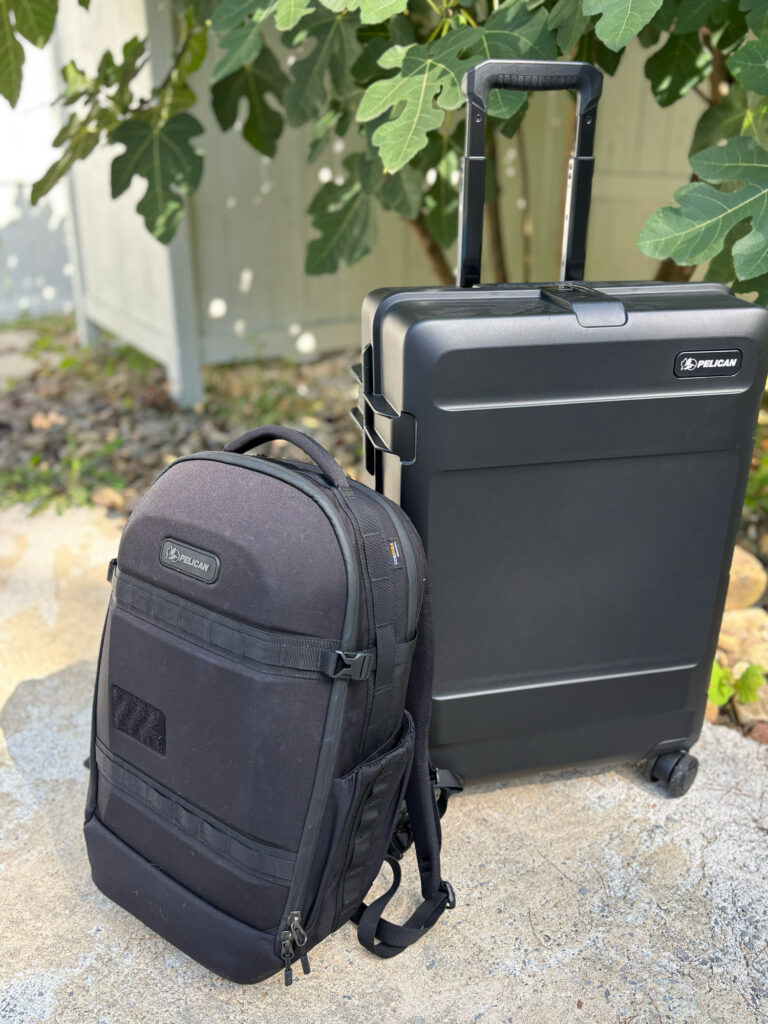
High Impact Luggage and Packs
You’ve got to protect your creature comforts too. Which is why high-quality luggage is an investment worth making. On a recent trip to Costa Rica, chasing roosterfish and blue marlin out of the Ossa Peninsula’s Crocodile Bay, I tested a new Pelican ATX hard-sided travel case as a checked bag through four commercial flights, there and back, as well as two puddle jumper flights to and from a tiny regional airport. I’m happy to report the glass bottle of Cacique Guaro purchased at the duty free to make chiliguaros made it through the gauntlet of Central American baggage handlers unscathed.
There never was a doubt. There’s a reason photographers trust their expensive equipment to Pelican cases, and Pelican luggage is bomb-proof as well. It just happened to be the rainy season on the peninsula, and for this I was glad to have sealed waterproof luggage. The other features feel high-end and function like you’d expect from this trusted brand. The TSA locking latches, the spinner wheels, the telescoping handle, all of it made navigating airports smooth and easy. As expected, my hat brims and leather shoes came through the ordeal uncreased thanks to construction the company calls Pelican Armor.
Another piece of Pelican gear that came in very handy during the Croc Bay expedition was a PX25 Aegis Travel Pack. This backpack is slightly rigid with a front shell, so it offers protection while retaining the versatility and comfort of a soft pack. I used it as a carry-on while flying and then daily to shuttle gear—rainsuit, notebooks, laptop, sunscreen, billfold, phone, keys, etc.—to and from the boat.
This pack offered plenty of space and protected my gear through pounding runs offshore. Its water-resistant materials kept everything dry through salt spray and some rain. Numerous interior and exterior pockets kept everything organized and right at hand when needed. -Nick Carter

